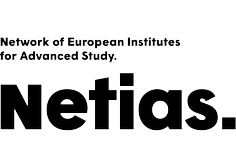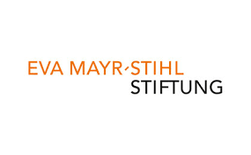Katja Arndt
October 2008 - April 2011
Universität Potsdam
Institut für Biochemie und Biologie
Karl-Liebknecht-Str. 24-25, Haus 25
14476 Potsdam
http://www.uni-potsdam.de/ibb/
Dr. Katja Arndt received her Diploma in Biochemistry from the University and Medical School of Hannover, Germany. After obtaining her Ph.D. in Biochemistry under the supervision of Professor Andreas Plückthun, University of Zurich, Switzerland, and Professor Tom Alber, University of California, Berkeley, she continued as a post-doctoral research associate. With the acceptance to the Emmy-Noether Excellence program of the German Research Foundation (DFG) in 2003, Katja Arndt became head of the group 'Protein Engineering in Biosystems' in the Department of Biology, University of Freiburg, Germany. In 2008, she was appointed as Junior Fellow in the School of Life Sciences (LIFENET) of the Freiburg Institute for Advanced Studies (FRIAS). Her academic achievements have been recognized by many awards and scholarships: acceptance to FRIAS (2008) and the Emmy-Noether Program of Excellence (German Research Foundation/DFG; 2003), EMBO Fellowship (2002), 'Outstanding Dissertation Award' (University of Zurich; 2000), Eli Lilly & Company Poster Award (Protein Society Symposium, Boston, MA; 1999), Ph.D. Scholarship (Roche Research Foundation, Switzerland; 1996-1999), "Special Grant for Junior Scientist" (Swiss Society of Biochemistry; 1997). Her research is currently promoted by FRIAS, bioss, the German Research Foundation, the José Carreras Leukemia Foundation and the German Academic Exchange Service (DAAD).
Protein-protein interactions are key for virtually all biological systems and play important roles in numerous diseases. Consequently, peptides targeting oncogenic proteins are of utmost therapeutic interest. Yet, the energetic determinants driving specific protein-protein interactions are not entirely understood. We use rational design in combination with in vivo and in vitro selection systems combining competitive and negative design aspects. This results in interfering peptides (iPEPs) specifically directed against the protein-protein interaction domain of transcription factors such as Jun, Fos, Myc and AF10. Remote control of inhibitors will be achieved by crosslinking of photo-switchable chemical linkers, and D-peptides will be employed to improve protease resistance. Quantitative data of inhibitor and wild-type interactions are obtained and aid modeling of the response of the underlying system. iPEPs are key tools for studying not only single pathways but also their interconnection on the systems level.
My research combines synthetic aspects of biology with the system approach by generating synthetic peptide modules that are applicable for analyzing the integration of pathways in biological systems but can also be used to build artificial pathways to further our understanding of the system in general or validate hypotheses.
- J. Speck, K.M. Arndt, K.M. Muller: Efficient phage display of intracellularly folded proteins mediated by the TAT pathway Protein Eng Des Sel, 2011; 24 (6): 473-484
- J. Speck, S.C. Stebel, K.M. Arndt, K.M. Muller: Nucleotide exchange and excision technology DNA shuffling and directed evolution Methods Mol Biol, 2011; 687: 333-344
- F.Z. Zhang, K.A. Timm, K.M. Arndt, G.A. Woolley: Photocontrol of Coiled-Coil Proteins in Living Cells Angewandte Chemie-international Edition, 2010; 49 (23): 3943-3946
- P.R. Staab, J. Walossek, D. Nellessen, R. Grünberg, K.M. Arndt, K.M. Müller: SynBioWave-a real-time communication platform for molecular and synthetic biology Bioinformatics, 2010; 26 (21): 2782-2783
- J.M. Mason, K.M. Müller, K.M. Arndt: Peptides Tailored to Interfere with Protein Interaction and Function Chim Oggi, 2009; 27 (2): 47-50
- J.M. Mason, U.B. Hagemann, K.M. Arndt: Role of Hydrophobic and Electrostatic Interactions in Coiled Coil Stability and Specificity Biochemistry-us, 2009; 48 (43): 10380-10388
- Jouaux, E.M., Timm, B.B., Arndt, K.M.* & Exner, T.E.* (2009) Improving the Interaction of Myc-Interfering Peptides with Myc Using Molecular Dynamics Simulations. J. Pept. Sci. 15: 5-15. *corresponding authors
- Mason, J.M., Müller, K.M. & Arndt, K.M. (2008). iPEP: Peptides Designed and Selected for Interfering with Protein Interaction and Function. Biochem. Soc. Trans. 36, 1442-47.
- Hagemann, U.B., Mason, J.M., Müller, K.M. & Arndt, K.M. (2008). Selectional and mutational scope of peptides sequestering the c-Fos coiled coil domain. J. Mol. Biol. 381(1):73-88.
- Jouaux, E.M., Schmidtkunz, K., Müller, K.M. & Arndt, K.M. (2008). Targeting the c-Myc coiled coil with interfering peptides to inhibit DNA binding. J. Pept. Sci. 14(9):1022-31.
- Mason, J.M., Hagemann, U.B. & Arndt, K.M. (2007). Improved stability of the Jun−Fos Activator Protein-1 coiled coil motif: A stopped-flow circular dichroism kinetic analysis. J. Biol. Chem. 282(32):23015-24.
- Mason, J.M., Müller, K.M. & Arndt, K.M. (2007). Positive Aspects of Negative Design: Simultaneous Selection of Specificity and Interaction Stability. Biochemistry 46(16), 4804-14.
- Mason, J.M., Schmitz, M.A., Müller, K.M. & Arndt, K.M. (2006). Semirational design of Jun-Fos coiled coils with increased affinity: Universal implications for leucine zipper prediction and design. Proc. Natl. Acad. Sci. USA 103(24), 8989-8994.





